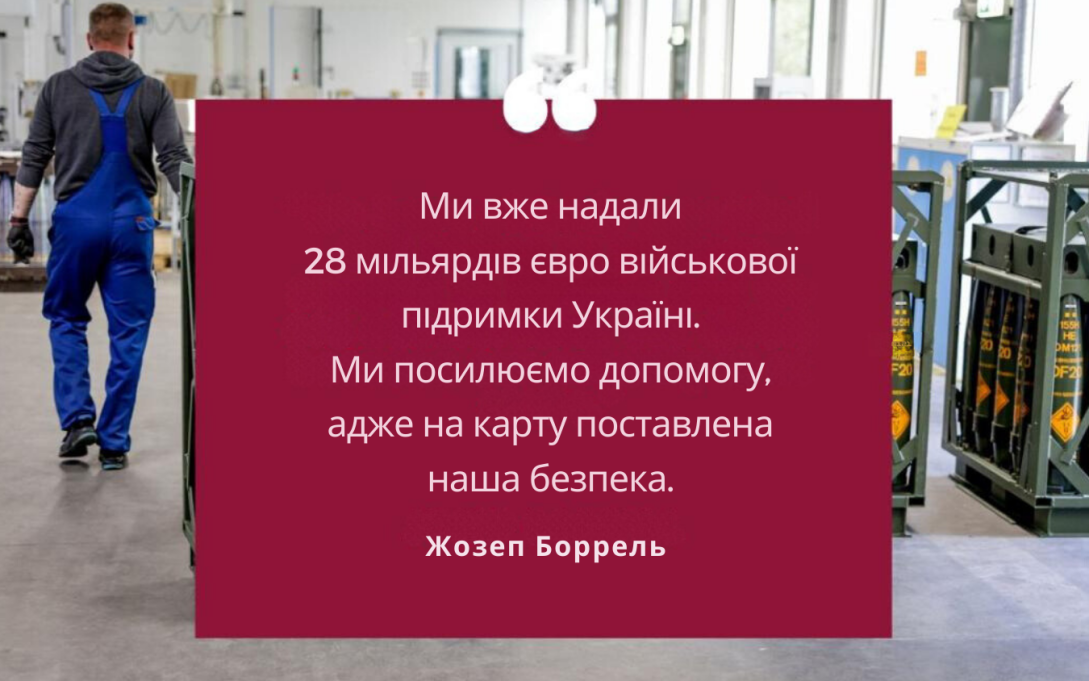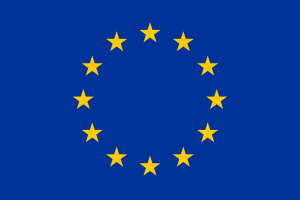To secure peace, the EU needs to be ready to defend itself

Last Wednesday, we had an informal meeting of EU Defence Ministers at the invitation of the Belgian minister, as we do at each rotating presidency. It has been one of the most dense and intense Defence Ministers meeting since the beginning of my mandate with frank and open discussions.
Already €28 billion military assistance provided to Ukraine
First, we discussed our military support to Ukraine. Rustem Umerov, the Ukrainian Minister of Defence, updated us via video message on the situation in the battlefield and Ukraine’s needs. We shared with our member states new aggregated data about our support to Ukraine since the start of the Russian aggression, almost two years ago. The European Union, through its own instruments, and its member states, bilaterally, have already provided together more than €28 billion of military assistance to Ukraine. It is quite an impressive amount.
Ahead of this meeting, we had also asked our member states about their budgetary commitments for military support to Ukraine in 2024. We have not yet received all answers, but many Member States have already sent their inputs, and at this stage, they have budgeted €21 billion in 2024 alone in military assistance to Ukraine. It demonstrates that we are accelerating our support significantly. In one single year, we will get close to the amount spent in the two previous years of this war.
“We are accelerating our military support to Ukraine significantly. In 2024, in one single year, we will get close to the amount spent to support Ukraine in the two previous years of this war.”
We also took stock of our EU training mission. We have almost reached the target of 40,000 Ukrainian soldiers trained and we have agreed to add an additional 20,000 by the summer. By then, we will have trained 60,000 Ukrainians soldiers in total on EU territory. As any military leader knows very well, good quality training means that many lives will be saved on the battlefield.
In March 2023, the EU and its member states committed to deliver 1 million artillery rounds to Ukraine within one year. Based on the information we have received so far - once again, not all member states have already sent their input - we will have delivered 524,000 rounds, 52% of the objective, by March.
We know that the battle is fierce in the frontline, that our Ukrainian friends need urgently more ammunition and that we are far away from the goal. However, we also knew from the start that the objective set last year was very ambitious. World shortage of ammunition, bottlenecks in the supply chain, limited stocks and necessary lead-time for new investment are some of the reasons for this delay. I passed the clear message to the member states that we need to do more and quicker. The European Defence Agency has signed 60 framework contracts with European producers in order to procure jointly 155mm calibre ammunition. We still have a spare capacity for €1.5 billion to absorb and I have encouraged EU member states to place more orders.
“631 000 additional ammunition rounds will be donated to Ukraine until the end of the year. It means that we will have delivered more than one million rounds before the end of 2024.”
It is a work in progress. According to the information received from our member states, 631 000 additional ammunition rounds will be donated to Ukraine until the end of the year. It means that we will have delivered more than one million rounds before the end of 2024. It is important to bear in mind that, in addition to these donations by the EU and its member states, the European defence industry is also delivering additional artillery ammunition to Ukraine under normal commercial contracts.
40 % more capacity in the defence industry since two years
The European defence industry is currently investing heavily to increase its production capacities. Based on the data provided by Commissioner Breton, this production capacity has already increased by 40 % since the beginning of the Russian war against Ukraine. Our production capacity for artillery rounds is currently at almost 1 million per year and by the end of 2024, it should reach 1.4 million rounds per year. It will allow us to replenish our stocks and at the same time to continue delivering ammunition to Ukraine.
We also continued discussions on a new Ukraine Assistance Fund, which I have proposed to create within the European Peace Facility to guarantee long-term military support to Ukraine. With the EPF, we have until now mostly supported delivery of military assistance to Ukraine from member states existing stockpiles. With the Ukraine Assistance Fund, we would rather focus on new acquisitions made by EU member states through joint procurement from the European defence industry and continue in parallel to ‘train and equip’ Ukrainian soldiers through EUMAM. The proposal I have put forward was well received by ministers. It was also discussed by EU leaders on Thursday. Work must now be accelerated in view of having this Fund in place by early March. There is no time to waste.
A new European Defence Industry Strategy
To strengthen our industrial and technological base in the defence sector, we need to move from an emergency mode, in which we have been for the last two years, to a longer-term approach. During its December meeting, the European Council called upon me, as High Representative for Security Policy and the European Commission, to swiftly present jointly a new European Defence Industrial Strategy, in coordination with the European Defence Agency. First elements were also discussed in our meeting and this new strategy will be presented in a few weeks. Europeans need to realise that we now live in a very dangerous world and that, to face these challenges, we need to strengthen the industrial and technological basis of our collective defence.
Aspides, a new EU naval defensive mission in the Red Sea
Lastly, we discussed the situation in the Red Sea and in the Sahel, in presence of our partners from the United Nations and NATO, as well as of a representative of the European Parliament. Regarding the Red Sea, we are about to launch a new maritime operation called ASPIDES, the ancient Greek word for “shield”. It will be a purely defensive operation to protect merchant vessels in the Red Sea by strengthening maritime situational awareness and accompanying them to deter attacks. This mission will not conduct any action on land. Our goal is to launch it at the latest during the next Foreign Affairs Council on 19 February. I am fully aware of the urgency, and this will be among the fastest operations launched in the history of our common security and defence policy.
Regarding Sahel, we have to adapt to the new reality on the ground. Mali, Niger and Burkina Faso have withdrawn from ECOWAS and, following the revocation by the junta in Niger of the corresponding legal agreements, our military partnership mission with Niger has already left the country. Preparations are underway for the withdrawal of our civilian mission by next June. In the coming weeks, we will also make decisions about our military mission in Mali, since its mandate is finishing next May. At the next Foreign Affairs Council, we will present a new country-by-country approach on Sahel, including on our engagement on security and defence.
Butter and cannons
I know that the economic and social situation is currently very tense throughout all European countries. And I am well aware that in such a context it can be challenging to increase military spending to support Ukraine, refill our stockpiles, develop our defence capabilities and strengthen our defence industry. However, this is exactly what needs to be done if we want to maintain our security and deter any attempt of aggression in an increasingly tense geopolitical context. Everyone, including myself, always prefers butter to cannon, but without adequate cannons, we may soon find ourselves without butter as well. “Si vis pacem, para bellum”, if you want peace, prepare for war.
